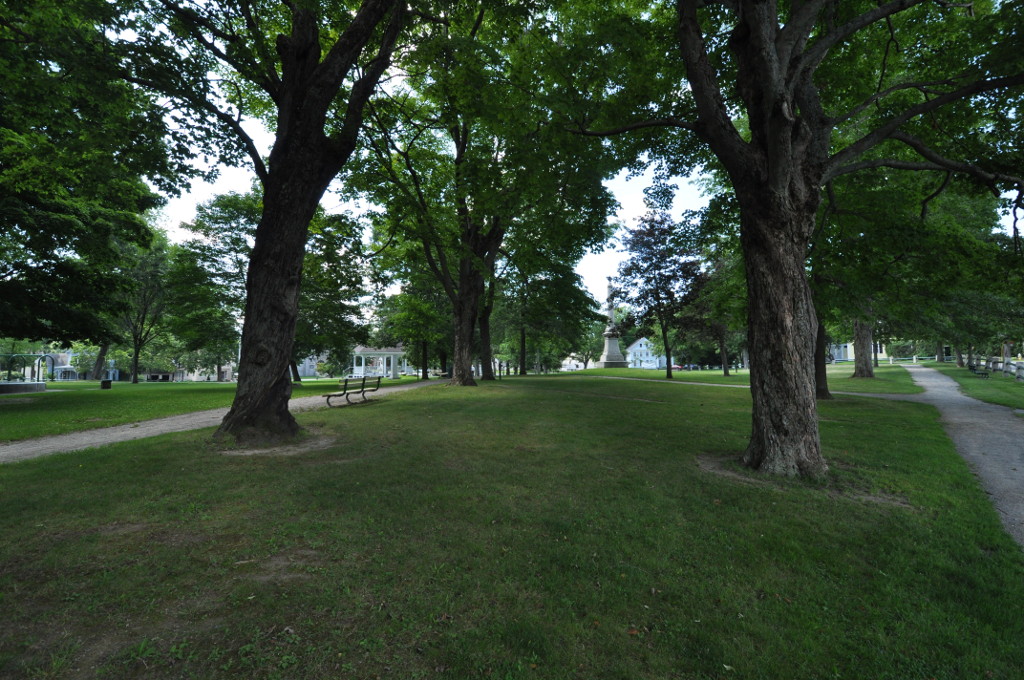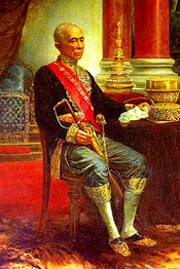|
Henrietta Hooker
Henrietta Edgecomb Hooker (December 12, 1851 – May 13, 1929) was an American botanist and professor at Mount Holyoke Female Seminary (now Mount Holyoke College). She was the second female doctoral graduate in botany at Syracuse University, which made her one of the first women to earn a Ph.D. in botany from any U.S. university. Early life and education Hooker was born to Eliza Annie Hooker and George Washington Hooker in 1851, and was orphaned at the age of seven. In 1867, at age sixteen, she began working at a New England Cotton Industry, cotton factory, but after a week of employment there, she sought help in finding a different job. Hooker taught in Vermont public schools from 1869 to 1870, and at the Academy of West Charleston, Vermont, West Charleston from 1870 to 1871. Hooker entered Mount Holyoke Female Seminary in 1871 and graduated in 1873. She did graduate work at Massachusetts Institute of Technology, MIT, and the universities of Syracuse, Berlin, and Chicago. She ea ... [...More Info...] [...Related Items...] OR: [Wikipedia] [Google] [Baidu] |
Gardiner, Maine
Gardiner is a city in Kennebec County, Maine, United States. The population was 5,961 at the 2020 United States census, 2020 census. Popular with tourists, Gardiner is noted for its culture and old architecture. Gardiner is a nationally accredited Main Street America community. It is included in the Augusta, Maine, Augusta, Maine micropolitan New England City and Town Area. History Located at the head of navigation on the Kennebec River, Gardiner was founded as Gardinerstown Plantation in 1754 by Silvester Gardiner, Dr. Silvester Gardiner, a prominent Boston, Massachusetts, Boston physician. Dr. Gardiner had made a fortune as a drug merchant, with one apothecary shop in Massachusetts and two in Connecticut, and became a principal proprietor of the Kennebec Purchase within the old Plymouth Council for New England, Plymouth Patent. He proved a tireless promoter for his development, which once comprised over . Dr. Gardiner induced a gristmill builder, sawmill, saw millwright, hous ... [...More Info...] [...Related Items...] OR: [Wikipedia] [Google] [Baidu] |
Parasitic Plant
A parasitic plant is a plant that derives some or all of its nutritional requirements from another living plant. They make up about 1% of angiosperms and are found in almost every biome. All Parasite, parasitic plants develop a specialized organ called the haustorium, which penetrates the host plant, connecting them to the host vasculature—either the xylem, phloem, or both. For example, plants like ''Striga'' or ''Rhinanthus'' connect only to the xylem, via xylem bridges (xylem-feeding). Alternately, plants like ''Cuscuta'' and some members of ''Orobanche'' connect to both the xylem and phloem of the host. This provides them with the ability to extract resources from the host. These resources can include water, nitrogen, carbon and/or sugars. Parasitic plants are classified depending on the location where the parasitic plant latches onto the host (root or stem), the amount of nutrients it requires, and their photosynthetic capability. Some parasitic plants can locate their host ... [...More Info...] [...Related Items...] OR: [Wikipedia] [Google] [Baidu] |
19th-century American Women Scientists
The 19th century began on 1 January 1801 (represented by the Roman numerals MDCCCI), and ended on 31 December 1900 (MCM). It was the 9th century of the 2nd millennium. It was characterized by vast social upheaval. Slavery was abolished in much of Europe and the Americas. The First Industrial Revolution, though it began in the late 18th century, expanded beyond its British homeland for the first time during the 19th century, particularly remaking the economies and societies of the Low Countries, France, the Rhineland, Northern Italy, and the Northeastern United States. A few decades later, the Second Industrial Revolution led to ever more massive urbanization and much higher levels of productivity, profit, and prosperity, a pattern that continued into the 20th century. The Catholic Church, in response to the growing influence and power of modernism, secularism and materialism, formed the First Vatican Council in the late 19th century to deal with such problems and confirm ce ... [...More Info...] [...Related Items...] OR: [Wikipedia] [Google] [Baidu] |
Scientists From Maine
A scientist is a person who researches to advance knowledge in an area of the natural sciences. In classical antiquity, there was no real ancient analog of a modern scientist. Instead, philosophers engaged in the philosophical study of nature called natural philosophy, a precursor of natural science. Though Thales ( 624–545 BC) was arguably the first scientist for describing how cosmic events may be seen as natural, not necessarily caused by gods,Frank N. Magill''The Ancient World: Dictionary of World Biography'', Volume 1 Routledge, 2003 it was not until the 19th century that the term ''scientist'' came into regular use after it was coined by the theologian, philosopher, and historian of science William Whewell in 1833. History The roles of "scientists", and their predecessors before the emergence of modern scientific disciplines, have evolved considerably over time. Scientists of different eras (and before them, natural philosophers, mathematicians, natur ... [...More Info...] [...Related Items...] OR: [Wikipedia] [Google] [Baidu] |
People From Gardiner, Maine
The term "the people" refers to the public or common mass of people of a polity. As such it is a concept of human rights law, international law as well as constitutional law, particularly used for claims of popular sovereignty. In contrast, a people is any plurality of persons considered as a whole. Used in politics and law, the term "a people" refers to the collective or community of an ethnic group or nation. Concepts Legal Chapter One, Article One of the Charter of the United Nations states that "peoples" have the right to self-determination. Though the mere status as peoples and the right to self-determination, as for example in the case of Indigenous peoples (''peoples'', as in all groups of indigenous people, not merely all indigenous persons as in ''indigenous people''), does not automatically provide for independent sovereignty and therefore secession. Indeed, judge Ivor Jennings identified the inherent problems in the right of "peoples" to self-determination, as i ... [...More Info...] [...Related Items...] OR: [Wikipedia] [Google] [Baidu] |
Mount Holyoke College Faculty
Mount is often used as part of the name of specific mountains, e.g. Mount Everest. Mount or Mounts may also refer to: Places * Mount, Cornwall, a village in Warleggan parish, England * Mount, Perranzabuloe, a hamlet in Perranzabuloe parish, Cornwall, England People * Mount (surname) * William L. Mounts (1862–1929), American lawyer and politician Computing and software * Mount (computing), the process of making a file system accessible * Mount (Unix), the utility in Unix-like operating systems which mounts file systems Books * ''Mount!'', a 2016 novel by Jilly Cooper Displays and equipment * Mount, a fixed point for attaching equipment, such as a hardpoint on an airframe * Mounting board, in picture framing * Mount, a hanging scroll for mounting paintings * Mount, to display an item on a heavy backing such as foamcore, e.g.: ** To pin a biological specimen, on a heavy backing in a stretched stable position for ease of dissection or display ** To prepare dead an ... [...More Info...] [...Related Items...] OR: [Wikipedia] [Google] [Baidu] |
Syracuse University Alumni
Syracuse most commonly refers to: * Syracuse, Sicily, Italy; in the province of Syracuse * Syracuse, New York, USA; in the Syracuse metropolitan area Syracuse may also refer to: Places * Syracuse railway station (other) Italy * Province of Syracuse, Sicily, Italy * Roman Catholic Archdiocese of Siracusa (also known as Syracuse), Sicily, Italy United States * Syracuse, Indiana * Syracuse Lake, Kosciusko County, Indiana; a lake * Syracuse, Kansas *Syracuse, Missouri * Syracuse, Nebraska * Syracuse metropolitan area, New York ** Syracuse Hancock International Airport, New York, USA *** Syracuse Army Airbase * Syracuse, Ohio * Syracuse, Oregon * Syracuse, Utah People * Duke of Syracuse * Count of Syracuse * Tyrant of Syracuse Schools * Syracuse City School District, Syracuse, New York, USA * Syracuse Elementary School (other) * Syracuse High School (other) * Syracuse State School, Syracuse, New York, USA * Syracuse University, Syracuse, New York ... [...More Info...] [...Related Items...] OR: [Wikipedia] [Google] [Baidu] |
American Women Botanists
American(s) may refer to: * American, something of, from, or related to the United States of America, commonly known as the "United States" or "America" ** Americans, citizens and nationals of the United States of America ** American ancestry, people who self-identify their ancestry as "American" ** American English, the set of varieties of the English language native to the United States ** Native Americans in the United States, indigenous peoples of the United States * American, something of, from, or related to the Americas, also known as "America" ** Indigenous peoples of the Americas * American (word), for analysis and history of the meanings in various contexts Organizations * American Airlines, U.S.-based airline headquartered in Fort Worth, Texas * American Athletic Conference, an American college athletic conference * American Recordings (record label), a record label that was previously known as Def American * American University, in Washington, D.C. Sports teams S ... [...More Info...] [...Related Items...] OR: [Wikipedia] [Google] [Baidu] |
1929 Deaths
This year marked the end of a period known in American history as the Roaring Twenties after the Wall Street Crash of 1929 ushered in a worldwide Great Depression. In the Americas, an agreement was brokered to end the Cristero War, a Catholic Counter-revolutionary, counter-revolution in Mexico. The Judicial Committee of the Privy Council, a British high court, ruled that Canadian women are persons in the ''Edwards v. Canada (Attorney General)'' case. The 1st Academy Awards for film were held in Los Angeles, while the Museum of Modern Art opened in New York City. The Peruvian Air Force was created. In Asia, the Republic of China (1912–1949), Republic of China and the Soviet Union engaged in a Sino-Soviet conflict (1929), minor conflict after the Chinese seized full control of the Manchurian Chinese Eastern Railway, which ended with a resumption of joint administration. In the Soviet Union, General Secretary of the Communist Party of the Soviet Union, General Secretary Joseph S ... [...More Info...] [...Related Items...] OR: [Wikipedia] [Google] [Baidu] |
1851 Births
Events January–March * January 11 – Hong Xiuquan officially begins the Taiping Rebellion in China, one of the bloodiest revolts that would lead to 20 million deaths. * January 15 – Christian Female College, modern-day Columbia College, receives its charter from the Missouri General Assembly. * January 23 – The flip of a coin, subsequently named the Portland Penny, determines whether a new city in the Oregon Territory will be named after Boston, Massachusetts, or Portland, Maine, with Portland winning. * January 28 – Northwestern University is founded in Illinois. * February 1 – '' Brandtaucher'', the oldest surviving submersible craft, sinks during acceptance trials in the German port of Kiel, but the designer, Wilhelm Bauer, and the two crew escape successfully. * February 6 – Black Thursday occurs in Australia as bushfires sweep across the state of Victoria, burning about a quarter of its area. * February 12 – ... [...More Info...] [...Related Items...] OR: [Wikipedia] [Google] [Baidu] |




